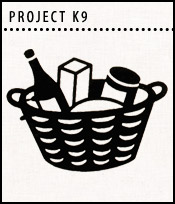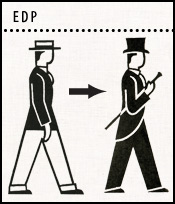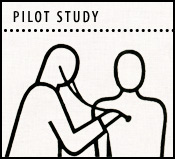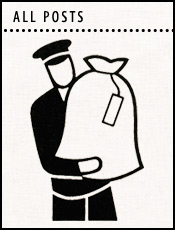The Ancient Tea Horse Road
As our travelers sleep warmly bundled in the stone cabin at the base camp of Haba Snow Mountain, the wind whips and howls outside, distributing icy haze throughout the thin air of the night sky.  Before they wake up, we will pause for a brief intermission. We will step back a thousand years to explore the importance of these lands, and the traders who traversed similar mountain passes with far fewer amenities or modern comforts.  Brought to you by Mekong Bureau chief and international chiller Mr. Stewart Motta, we present a special report on the ancient Tea Horse Road.
The Tea Horse Road, sometimes known as the Southern Silk Road, although silk never was a large commodity on the route, was first recorded as a major vein of trade during the Tang Dynasty (618-907). Â The route was in operation long before tea and horses moved across it, and tombs found in the northern reaches of the route suggest that it has been a corridor of travel for 4,000 to 5,000 years. Over the millennia this road and its tributaries carried not only commerce, but also culture, linking a myriad of people, traditions, and ideas, from Southeast Asia, China, Tibet, and then further west into the kingdoms of northern India.
Both the Silk Road and the Tea Horse Road were mainly in existence to supply the empires of eastern China with ample numbers of horses. China’s military relied on acquiring horses from Central Asia, and both silk and tea became China’s main exports to barter for the four-legged beasts. The scarcity of horses in China was a significant advantage to the “barbarians of the north” (Mongols, Turks, Tibetans) who frequently pillaged and invaded the empire on horseback, and would eventually form the greatest cavalry the world has ever seen, conquering most of mainland Asia on horseback in the name of Ghengis Khan. The Book of Tang reads “Horses are the military preparedness of the state. If Heaven takes away this preparedness it will totter and fall.”
A death sentence was in place for any individual trying to destroy China’s monopoly on silk. However, silk worms, eggs, and even farmers, were eventually smuggled out of China to Persia, Vietnam, and Japan. This ended China’s domination of the world’s silk production, and caused concern over the ability to keep the flow of horses heading toward the capital of Xi’an. Fortunately for the Chinese, a taste for tea had developed among the neighboring states. Most of the tea being produced to meet this new demand was grown in southwest China, mainly Yunnan and Sichuan Provinces.
Tea is indigenous to the area around Pu’er and Xishuangbanna Prefectures in southern Yunnan, which is believed to be the birthplace of tea. Some trees found in the area can be dated back over 1,000 years. This area is a cultural cocktail and located near the juncture of present day Lao, Burma, and China. The tea derives its name from the prefecture and the mention of Pu’er will to this day bring creases of satisfaction and pride across the faces of Yunnan’s people.
Pu’er tea was exported into Southeast Asia and north all the way to Lhasa and beyond into India mainly on the backs of horses or mules, but tea porters did exist as well. The price of one horse was around 130 pounds of caked tea. Men and women would pack up horses and stack sacks weighing 150 pounds or more on their shoulders, before trekking through the treacherous terrain of western Sichuan and Yunnan. Eventually China was acquiring 25,000 horses annually in exchange for over 3 million pounds of tea. Exporting this amount of tea greatly increased the traffic on the Tea Horse Road, and multitudes of people hashed out a livelihood from the industry.

Tea porters - 1908
This toilsome travel required a certain resiliency of the tea, and a system was created to dry the tea and form it into dense cakes. The cakes naturally ferment and are treated in Yunnan similar to wine, as the tea becomes better with age and connoisseurs know which years posses the most desirable flavor. Some cakes do not reach their prime age until after 30 to 40 years of slow fermentation. A tea cake could take over a year to complete the journey to Lhasa, fermenting as it climbed up to the Tibetan Plateau. It was this dark earthy temptress of the taste buds that seduced the Tibetan Empire after its unification in the early 600’s. The tea culture quickly grabbed hold in Lhasa, and by the 1700’s the Dalai Lama was reportedly reserving 2,500 kg of tea for his court annually.  To this day, Pu’er Tea is the beverage of choice in most Tibetan areas, being mixed with yak butter to produce a frothy sour beverage that is consumed both morning and night.
Resurgence of the Tea Horse Road and Mr. Scott Norton’s Grandfather
Within months after the bombing of Pearl Harbor in December 1941, the Tea Horse Road began its revival. Japanese forces controlled Southeast Asia and the waters along most of China’s eastern seaboard. Japan then invaded British controlled Burma, cutting the military supply route to the Kuomintang forces on the Burma Road. With all the seaports closed, the Tea Horse Road became the main overland route to supply Chiang Kai-shek and the allied forces in Kunming, Yunnan. Many American and British pilots were stationed in Kunming flying over “The Hump” on their way to and from Assam, India.
Asia Wheeling’s very own Scott Norton had a grandfather who was stationed in Kunming. If his grandfather enjoyed a glass of foreign booze or cigarettes during his time in Kunming, it had mostly likely come all the way on the backs of one of the 20,000 yaks or 25,000 horses and mules from India, through Tibet, passing through Lijiang, before hitting his parched lips in a Kunming saloon.
Peter Goullart, a Russian living in Lijiang in the 1940’s, who later wrote a famous book on the area called “Forgotten Kingdom,” recorded, “articles were packed for delivery at Lijiang, especially the liquors and cigarettes which were worth their weight in gold in Kunming, crowded with thirsty American and British troops… Few people have realized how vast and unprecedented this sudden expansion of caravan traffic between Indian and China was, or how important.â€
Fellow Asia Wheeling readers, this concludes our introduction to the Tea Horse Road, which these days sees minimal use besides some scattered tourism. But needless to say, the history and relevance of this road is one ripping good yarn.





















Comments
wow! that last picture is breath taking! thanks for sharing the history of it, makes it come alive.
Thank you, Stewie and Woody and Scott. Very fascinating story about the Tea Horse road and Pu er tea.
What a tale. Thank you for the engaging, beautifully written account.
Wonderful post! Scott’s granddad and my father, Manoog T. Heditsian is still with us today at a healthy 88. I will print this post and send it to him.
Very interesting and a detailed description. I was in Lijiang in March and this was the first time, that I heard of the tea and horse road. Yunnan province is an awsome place, I will definitely go back for a longer vacation.
It has already some South East Asian touch, the people are more friendly compared to the northn parts of China.
I want to find out more of it’s history and the connections to the countries around, like Myanmar, Vietnam and Laos.